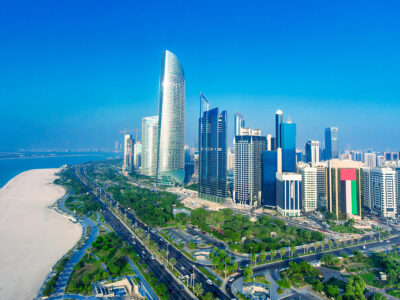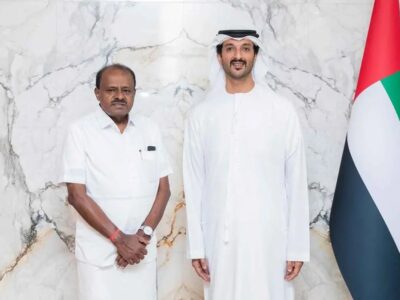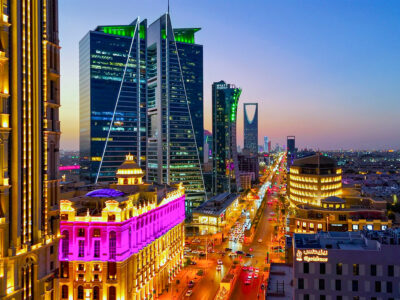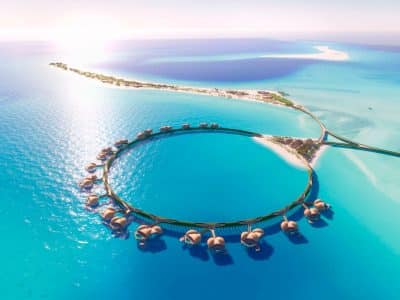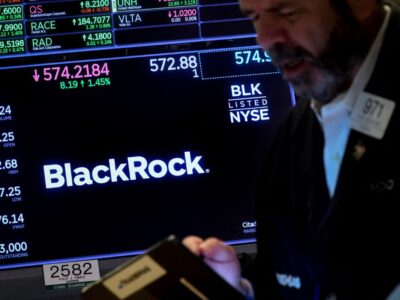If anyone believed that 2013 would be the year that Saudi Arabia would rein in its colossal spending plans, then last week’s budget announcement will have had them scratching their heads. On 29 December, the government confirmed that it would raise spending by 19 percent in 2013 to $219bn – making that hike the highest nominal increase in spending since records began.
The trend follows several years of expansionary budgets as the Saudi authorities attempt to stimulate the economy. Looking at the results for 2012, the plan appears to be working. Preliminary data for last year show that Saudi real GDP rose by 6.8 percent, with non-oil GDP – a vital sector given the country’s attempts to diversify away from hydrocarbons – growing by 7.5 percent. Last week’s announcement also corrected the previous GDP growth figures for 2011, which have now risen from 7 percent to 8.5 percent, the highest increase since 1979.
The government has also projected revenues for 2013 to come in at $221bn, although – as ever – this is a conservative figure, and based on a predicted oil price that is likely to be much lower than the actual price (around $70 for Brent, according to Jadwa Investment). For example, Saudi Arabia forecast its 2012 revenues at $187bn, but an oil price that hovered around the $110 mark during the year saw the actual figure rise to $331bn. As a result, Jadwa predicts that actual revenues this year will amount to roughly $310bn, based on an average Brent price of $104 in 2012.
Those higher-than-planned revenues left the Saudi budget sitting on a healthy surplus of $103bn, or just over 14 percent of GDP, in 2012. In the same vein, another strong surplus is expected in 2013. While the Ministry of Finance puts this surplus at only $2.4bn, owing to the conservative nature of its oil price projections, NCB Capital thinks a more realistic sum is $74bn. In terms of GDP growth, the Jeddah-based investment bank says the figure for this year is likely to be around 3.4 percent, mainly due to slower growth in oil production.
“However, this contraction in the oil sector will largely be offset by the non-oil sector, which is expected to grow by 7.4 percent, the second highest on record, driven by the private sector, mainly manufacturing and construction,” said Said Al Shaikh, NCB Capital’s group chief economist, in a research note.
Even at growth of 3.4 percent, Saudi Arabia’s economy will be the envy of most other large countries. That figure is above the average expected GDP (3 percent) of the G20 nations – of which the kingdom is one – according to Moody’s. And, waiting in the wings, is Saudi Arabia’s vast foreign reserves, which by October had amounted to a colossal $628bn, an impressive 17 percent increase on end-2011. That sum can easily alleviate any short-term problems that may occur if the global economy hits the buffers next year, or if the oil price slumps unexpectedly.
However, the concern for Saudi Arabia lies not in 2013, but further down the line. The fear is that the spending to which the kingdom is fast becoming accustomed will be more difficult to justify in around five years’ time. In October last year, the International Monetary Fund (IMF) warned all the GCC nations that the pace of government spending needed to be scaled down to “ensure long-term sustainability” in the face of weakening oil prices. The agency projected a fiscal deficit of 0.6 percent of GDP in 2016, if Saudi Arabia continues down its current path, as opposed to the 14 percent surplus the kingdom reported in 2012.
Article continued on next page
“While the economic picture will improve, 2013 will be the fifth consecutive year that economic growth will be dependent on government spending,” says Fahad Alturki, a senior economist at Jadwa Investment. “The spending will be affordable, but the economic growth such vast spending will generate will not be spectacular.”
But Saudi officials are adamant that their plans are on the right track. “They have been working on scenarios assuming, I would say, a doomsday scenario which I don’t agree with,” Finance Minister Ibrahim Al Assaf said last year, of the IMF comments. “We are ready for that, for these circumstances, through building the appropriate reserves in order to be ready for any adverse developments in the oil market.”
One area that the IMF report highlighted was growth in the non-oil sector, where the kingdom is investing heavily. In 2011, the non-oil private sector grew by an impressive 8.3 percent, helped not only by strong central spending, but also by a good year for the banking sector, which helped overall lending. In some respects, 2011 was a watershed year; as the Arab Spring convulsed nearby economies, King Abdullah committed to a $130bn social spending package, which included pay rises and two-month salary bonuses for civil servants, as well as major disbursements to home-financing funds.
That announcement, which was matched by similar moves in neighbouring Gulf states, served to highlight the strains that have been put on the Gulf’s most populous economy. Nearly 60 percent of the GCC’s citizens live in Saudi Arabia, and while the country’s economic growth has provided stability for many of its 28 million strong population, the oil wealth has not permeated quite as comprehensively as it has done elsewhere.
The results of King Abdullah’s spending programme were most evident in 2011 in three main sectors; manufacturing (up by 15 percent), construction (up by 11.6 percent) and transport and communications (up by 10.1 percent). That pace of growth continued in 2012, with both construction and transport and communications again growing by double-digit rates. Those sectors have been helped by the government’s infrastructure spending programme; all over the kingdom, bumper new utilities, transport and energy projects are sprouting out of the desert.
That investment is clearly going to continue this year. A day after the budget announcement, Finance Minister Al Assaf said that two new bonds would be issued in order to finance construction work on the kingdom’s biggest airports. Last January, the General Authority for Civil Aviation said it was planning to issue a second sukuk to help fund the $7.2bn redevelopment of King Abdulaziz International Airport in Jeddah. The first tranche, for $4bn, was successfully issued last year. Also on the agenda is the redevelopment of King Khaled International Airport in Riyadh.
A closer look at where the 2013 budget will be spent highlights the government’s biggest priorities.
Article continued on next page
“Budgeted spending is some way below the actual level in 2012 of SR853bn,” says Alturki. “We don’t view this as a withdrawal of the stimulus or a rethinking of the ongoing expansionary fiscal stance. In fact, actual spending as a share of non-oil GDP remains on the high side at 83.5 percent, compared with 70 percent of non-oil GDP in the last ten years.”
In line with the government’s push to get more nationals into work, education and training again takes the lion’s share of the non-oil-related budget for this year, with 25 percent of total spending. Just over $54bn will be spent on the sector in 2012, a 21 percent rise on last year. Around $1bn of that sum will be spent on 539 new schools, in addition to 1,900 schools currently under construction. Another $6bn will be spent on scholarships for Saudis studying abroad.
The sector which saw the biggest hike in spending was municipality services, which rose by 23 percent to $9.6bn. This section of the budget covers local infrastructure, particularly in the kingdom’s larger cities. Riyadh and Jeddah are both, to a certain extent, hamstrung by fast-growing populations, which have to put up with ageing roads and poor utilities. Traffic jams are a way of life in the capital, while residents of Jeddah have been accustomed, over the last 30 years, to see sewerage trucks removing waste from their houses. The fragile nature of Jeddah’s infrastructure network was highlighted in 2009, when over 120 were killed due to devastating floods. The disaster provoked rare protests, prompting a government investigation into whether corrupt officials had allowed houses to be built in flood-prone areas.
Transport and telecommunications saw another big rise in spending, up by 16 percent to $17bn. Much of this sum will again go on large infrastructure projects, with $8bn going on ‘new projects’ such as 3,700km of new roads, upgrading ports, infrastructure in new industrial cities, the airports and the kingdom’s considerable railway network.
Looking at the data, it would seem that Saudi Arabia’s economy has never been stronger. Current account surpluses and foreign assets are currently at an all-time high, and inflation is steadily tracking back down to 4.5 percent, from 6 percent a couple of years ago. However, a major issue will remain employment; one of the main local stories in Saudi Arabia during 2012 was the implementation of the controversial Nitaqat programme. With thousands of young Saudis joining the workforce every year, the onus is on the government and the private sector to provide them with jobs.
A further worry has been the performance of the Saudi stock market, the Tadawul All Share Index (TASI) in 2012. From a high of nearly 8,000 points in the first quarter of last year, the TASI stood at 6,860 points at the time this magazine was going to press. Part of the decline has been due to poor global sentiment – particularly in relation to the US fiscal cliff, which has now been solved – and due to a pull-back from the Capital Markets Authority about allowing foreigners to invest in Saudi stocks. Concerns over the health of King Abdullah during December also put a dent into the index.
Still, the short term does look positive.
“Greater execution of government investment projects, especially in the infrastructure sector, means that non-oil growth should maintain the current solid performance,” says Jadwa’s Alturki. “Bank lending and regional unrest will be less of a drag on performance.”
